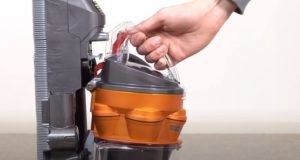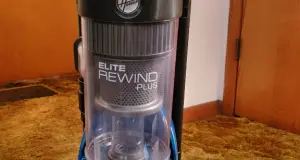The current era is significantly shaped by technology and innovation; even technological gadgets are evolving in various ways to decrease effort while boosting productivity and efficiency. This is also the case for robot vacuums. While traditional vacuum cleaners have already significantly cut down on manual labor, robot vacuum cleaners have taken convenience to a whole new level.
An Insight on How to Keep Robot Vacuum From Going Down Stairs
Robot vacuum’s functioning is majorly attributed to the sensors. The sensors sense the surface and prevent the robot vacuum from falling off the stairs, hitting the walls, and going underneath the furniture.
Robot vacuums are also called Roomba; the best way to keep a Robot vacuum from going downstairs is to maintain the proper functioning of its sensors. As we are aware that the vacuum is subjected to clean dirt particles, debris, bacteria, and other superficial residues from our place; hence, there are chances that its sensors can get clogged. Cleaning the sensors or the cliff sensors will improve the functioning of your vacuum and will help it recognize stairs and prevent them from falling.
Another way to keep your robot vacuum from falling downstairs is to use the virtual wall. The virtual wall helps the robot detect the hindrance at least 10 feet and allows it to change its path.
What is Roomba
Roomba is an advanced version of the manual vacuums with advanced features. It is also referred to as a robot vacuum and also as robovac. Roomba has limited floor cleaning; this is greatly dependent on the sensors known as cliff sensors fitted in its body.
Roombas are further classified according to their features and functions, such as those that make less noise, Roombas controlled through remote, and many more.
General Features of Robot Vacuum
-
Cleaning Modes
There are different features of robot vacuum, including various cleaning modes such as auto, spot, turbo, edge, quiet, and remote control. Each mode has its specific function; for example, the turbo cleaning mode picks up the most dirt and dust, making the greatest noise. In contrast, the quiet mode cleans the dirt and dust but minimizes the noise pollution; hence, it is quite helpful when cleaning at home.
-
Quick Recharge
Most vacuums are equipped with a lithium-ion battery and take almost five to six hours to recharge fully. This fully charged battery allows the vacuum to work for 100 minutes. However, the quick charge battery utilizes the shortest way to recharge. In addition to this, it does not consume extra energy and only uses the right amount of charge needed.
-
HEPA Filters
HEPA filters are a distinguishing feature between robot vacuums and manual vacuums. HEPA filters help you live in a clean environment making the environment free from pollen and minute dust particles. In addition to this, HEPA filters also make the environment allergen-free.
-
Wet Mopping
Wet mopping is another most desired feature of robot vacuum. You can either manually wet the attached mop or can either spray water to mop the surface. In addition to this, the robot vacuum also has sensors to detect which surfaces to mop and which surface to avoid mopping.
Pros of Robot Vacuum
Robot vacuums provide scheduled cleaning. This means that it does not need human interaction. It can be controlled through remote and will get the job done too.
Robot vacuums are compact and can get underneath your sofas and furniture too. You do not have to worry about the accumulated dirt and bacteria down your heavy furniture.
Robot vacuum allows spot cleaning to clean a specific area or spillage. Hence, to clean a specific area, you can employ the use of a robot vacuum.
Cons of Robot Vacuum
One of the major drawbacks of a robot vacuum is keeping your place vacuum-proof; you have to clean up the area and pick up things that might be stuck in your robot vacuum.
One of the major cons of robot vacuum is that it tends to run longer and is slower. It generally makes less noise than the normal manual vacuum but takes much longer to clean up an entire area.
Another drawback of robot vacuum is its cost. A robot vacuum price range starts from $250, which is an extravagant amount to pay for just a robot vacuum, which ultimately requires some human effort.
Final Verdict
Conclusively, keeping a robot vacuum from going downstairs is to pay special attention to its sensors and perform timely cleaning of the sensors. In addition to this, you should also create a vacuum-proof area before vacuuming your place; this will prevent small unnecessary stuff from trapping inside the vacuum.
You can also spend some amount and get a virtual wall which is the safest method and will detect any hindrance at 10 feet. This will allow your robot vacuum to change its path, and it will not smash into the wall.




